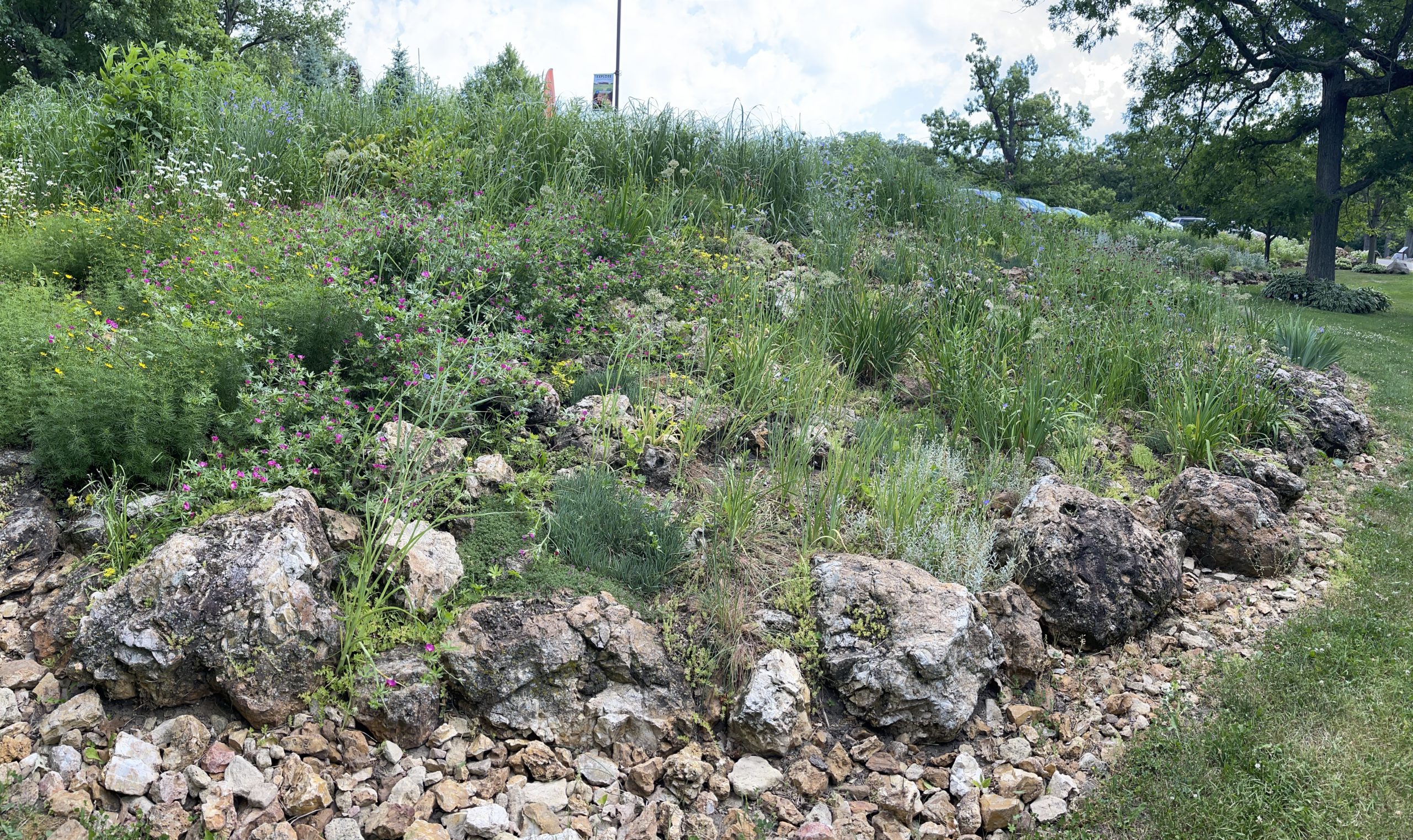The plants — a selection of wetland edge vegetation, such as wildflowers, sedges, rushes, ferns, shrubs and small trees — take up excess water flowing into the rain garden from from impervious urban areas like roofs, driveways, walkways, and compacted lawn areas. Controlling potentially harmful runoff through the establishment of Rain Gardens is an important way we continue our commitment to sustainable “green” practices.

